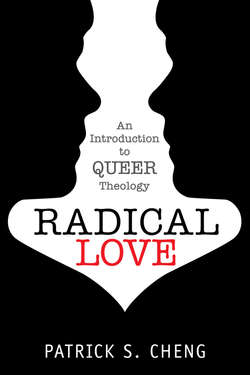Читать книгу Radical Love - Patrick S. Cheng - Страница 31
На сайте Литреса книга снята с продажи.
Liberation Theology
ОглавлениеThe second strand in the evolution of queer theology is liberation theology. This strand is modeled after the various liberation theologies that came into being in the late 1960s (for example, Latin American liberation theology and black liberation theology), which were based upon the Exodus narrative of the Israelites being freed from their slavery in Egypt. The primary concern of this strand was not just acceptance of queer people by the church, but also the demonstration of how queer liberation—that is, freedom from heterosexism and homophobia, as well as the freedom to be one’s own authentic self—is at the very heart of the gospel message and Christian theology.
Like the liberation theologies of Gustavo Gutiérrez and James Cone,10 the liberation strand of queer theology argued that God was not neutral and in fact had a preferential option for the poor and oppressed. For example, in 1968, the Anglican priest H.W. Montefiore published a controversial essay, “Jesus, the Revelation of God,” which suggested that Jesus’ celibacy might have been due to his being a homosexual. If so, Montefiore argued, this would be “evidence of God’s self-identification with those who are unacceptable to the upholders of ‘The Establishment’ and social conventions.” That is, just as liberation theologians had argued in other contexts, Montefiore argued that God’s nature was “befriending the friendless” and “identifying himself [sic] with the underprivileged.”11
This focus on liberation theology appeared in other publications as well. For example, the September 1972 issue of The Gay Christian, a newsletter of the Metropolitan Community Church of New York, featured a number of articles about “gay theology.” Howard Wells, the pastor of MCC New York at the time, wrote a provocative piece called “Gay God, Gay Theology” in which he described how the gay community has the right to refer to God—whom he called “our liberator, our redeemer”—as our “gay God.” Wells rejected the notion of a God who would oppress gay people. Specifically, Wells said that any God who does so and “is blind to the enslavement of gay people” is nothing more than an “oppressive idol.”12
In 1974, Sally Gearhart and William R. Johnson edited an anthology called Loving Women/Loving Men: Gay Liberation and the Church. In that volume, Johnson wrote an essay called “The Good News of Gay Liberation,” in which he argued for the liberation of lesbians and gay men in the church. He noted that the “passive acceptance of injustice is no longer possible” for lesbian and gay people, and that the cry of “No more!” is especially applicable to the Christian church. Johnson proposed a number of goals for the church toward liberation, including the affirmation of same-sex relationships, electing gay people into church leadership positions, encouraging gay people to enroll in seminaries, and developing a “totally new theology of sexuality which would reflect the validity of same-sex relationships as well as other relationships and life styles.”13
These early works of liberation theology were followed by a number of works in the late 1970s and 1980s with an unapologetically liberative bent. These works included Towards a Theology of Gay Liberation, a collection of essays published in 1977 and edited by Malcolm Macourt, which included an essay about the relationship between Christian liberation and gay liberation and how the two “must impinge upon one another for better or for worse” because both deal with society as a whole.14 Another work of gay liberation theology during this period was Gay/Lesbian Liberation: A Biblical Perspective, written by George R. Edwards and published in 1984, which argued for a biblically based theology of liberation for gays and lesbians.15 In 1989, J. Michael Clark, a gay theologian, published A Place to Start: Toward an Unapologetic Gay Liberation Theology, in which he argued for “(re)constructing a gay liberation theology” that would rethink methodological issues as well as the importance of experience as a source for theology.16
The gay liberation strand of theology continued into the 1990s. In 1992, Robert Williams published Just As I Am: A Practical Guide to Being Out, Proud, and Christian. In that book, Williams contended that, consistent with the teachings of “Liberation Theology 101,” only lesbians and gays can determine for themselves what constitutes sin and morality. For Williams, “any straight cleric’s” attempt to define sin for gays and lesbians is “patriarchal and condescending” and ultimately “blasphemy.”17
Similarly, in 1995 Richard Cleaver wrote Know My Name: A Gay Liberation Theology, in which he noted that the Latin American model of liberation theology demanded that lesbians and gay men—and not “religious experts”—work out a theology of “homosexuality” for themselves.18 In sum, what all of these works shared in common, from the 1960s through the 1990s, was the assertion that the gospel and the Christian faith demands that queer people be liberated from the bondage of heterosexism and homophobia.
